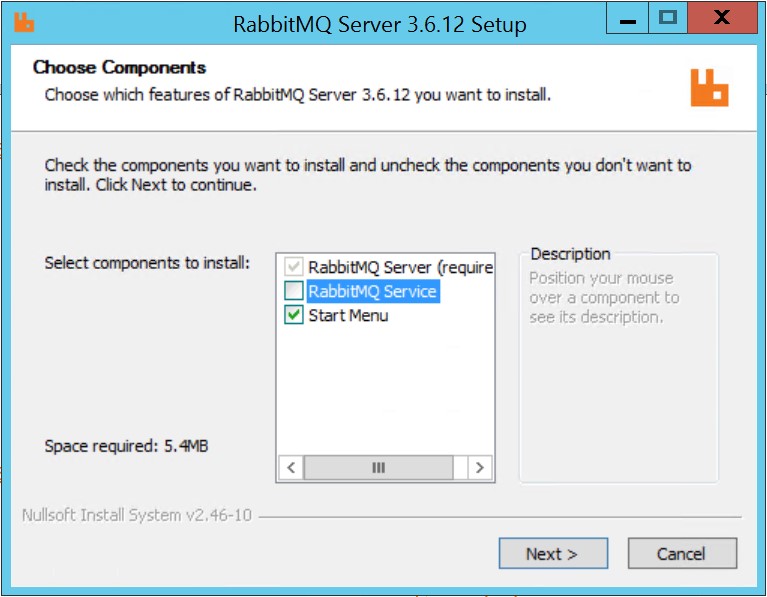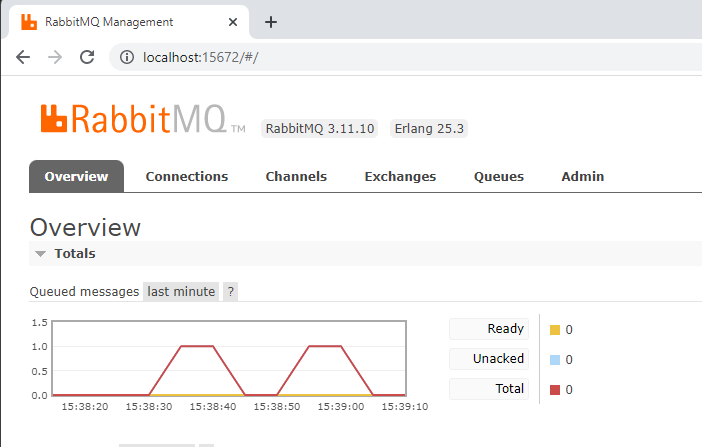Table of Contents
RabbitMQ
RabbitMQ is a popular open source message broker. In a process data context, it can be used for buffering and/or routing data across networks and between servers.
Data Core supports this with two components:
- Rabbit MQ Producer - Writes process data to a queue
- Rabbit MQ Consumer - Reads process data from a queue
Getting Started
Enable RabbitMQ on Windows
RabbitMQ has several deployment options - below we provide our recommended approach.
1. Install Erlang
Erlang is a high-level programming language for real-time systems. It is a pre-requisite of RabbitMQ.
Download and run the Erlang 64bit Windows Installer.
2. Install RabbitMQ
Download and run the RabbitMQ 64bit Windows Installer.
When prompted, untick the “Install RabbitMQ Service” option.
3. Configure RabbitMQ
Open “RabbitMQ Command Prompt” in admin mode and execute the following instructions.
set RABBITMQ_BASE=%PROGRAMDATA%\RabbitMQ rabbitmq-service install rabbitmq-plugins enable rabbitmq_management rabbitmq-service start
The above actions installs the RabbitMQ service to the ProgramData directory (rather than the default action which installs the service to a user-specific AppData folder) and enables the admin UI.
4. Enable Shovel Plugin (optional)
The shovel plugin is only required on servers actively pushing data downstream to another server.
Open RabbitMQ Command Prompt in admin mode and enter
rabbitmq-service stop rabbitmq-plugins enable rabbitmq_shovel rabbitmq-plugins enable rabbitmq_shovel_management rabbitmq-service start
RabbitMQ Administration
The RabbitMQ Admin UI is accessible on
http://localhost:15672/
Hint Bookmark this link.
The default login is Guest/Guest.
This account account is only permitted for localhost login. Also note port 15672 is closed by default.
RabbitMQ Producer
RabbitMQ Producer writes tag-value data to a queue.
The default configuration writes persistent messages to a local, durable queue called “data_core.tag_values”. This means messages are stored to the hard drive and will survive a server restart.
The keys settings are:
- Routing Key
The routing key to set on messages containing snapshot/historical tag values.
RabbitMQ Consumer
RabbitMQ Consumer reads tag-value data from a queue.
The default configuration reads messages from a local queue called “data_core.tag_values”. The driver will create this queue if it doesn't already exist.
The keys settings are:
- Queue Names
A comma-delimited list of RabbitMQ queues to read tag values and/or event messages from.


